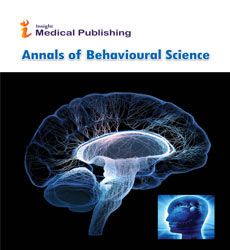The Hereditary Disorders and Diagnosis in Humans
Biyu Bo*
Department of Neuroscience, Tohoku University, Sendai, China
- *Corresponding Author:
- Biyu Bo
Department of Neuroscience, Tohoku University, Sendai, China
Tel: 842255662662
E-mail: biyu.bo@gmail.com
Received Date:March 16, 2022, Manuscript No. IPABS-22-12146; Editor assigned: March 19, 2022, PreQC No. IPABS-22-12146 (PQ); Reviewed: April 02, 2022, QC No. IPABS-22-12146; Revised: April 05, 2022, Manuscript No. IPABS-22-12146 (R); Published: April 08, 2022, DOI: 10.36648/2471-7975.8.3.60.
Citation: Bo B (2022) The Hereditary Disorders and Diagnosis in Humans. Ann of Behave Sci Vol:8 No:3
Introduction
Hereditary disorders are health problems caused by one or more abnormalities in the genome. This can be caused by mutations in a single gene single gene or multiple genes multi-genes, or chromosomal abnormalities. Polygene disorders are the most common, but the term is most often used to refer to disorders that have a single genetic cause in either a gene or a chromosome. Responsible mutations occur spontaneously prior to embryonic development de novo mutations, are inherited from two parents who are carriers of defective genes autosomal recessive inheritance, or are ill Inherited from one parent of autosomal dominant inheritance. If the inherited disorder is inherited from one or both parents, it is also classified as an inherited disorder. Some disorders are caused by mutations on the X chromosome and have X-linked inheritance. Very few diseases are inherited on the Y chromosome or mitochondrial DNA due to their large size.
There are well over 6,000 known hereditary disorders, and new hereditary disorders are constantly being described in the medical literature. It can treat more than 600 genetic diseases. One in fifty has a known monogenic disorder and one in 263 has a chromosomal abnormality. About 65% of people have health problems due to congenital genetic mutations. Due to the large number of hereditary disorders, 1 in 21 is affected by hereditary disorders that are classified as "rare" (usually defined as less than 1 in 2,000). Most hereditary disorders are rare in nature.
5 Most Common Hereditary Disorders
- Down Syndrome
- Thalassemia
- Cystic Fibrosis
- Tay-Sachs disease
- Sickle Cell Anaemia
- Learn More
- Recommended
- Sources
There are well over 6,000 known hereditary disorders, and new hereditary disorders are constantly being described in the medical literature. It can treat more than 600 genetic diseases. One in fifty has a known monogenic disorder and one in 263 has a chromosomal abnormality. About 65% of people have health problems due to congenital genetic mutations. Due to the large number of hereditary disorders, 1 in 21 is affected by hereditary disorders that are classified as "rare" (usually defined as less than 1 in 2,000). Most hereditary disorders are rare in nature.
Most inborn errors of metabolism, known as inborn errors of metabolism, are due to defects in a single gene. Many of these single gene defects occur in populations less frequently than expected based on simple probability calculations, as they can impair the fitness of affected people.
Diagnosis due to the wide range of known hereditary diseases, the diagnosis is very different and depends on the disease. Most hereditary disorders are diagnosed before birth, at birth, or in early childhood, but some, such as Huntington's disease, cannot be diagnosed until adult hood. The basic aspects of hereditary diseases are based on the inheritance of genetic material. A detailed family history can predict possible disabilities in a child. This gives healthcare professionals the opportunity to perform specific tests according to their disability and predict the likelihood of stillbirth or end of life for their parents. Examination prenatal diagnosis can detect the presence of characteristic abnormalities in fetal development by ultrasound, or the presence of characteristic substances by invasive procedures involving insertion of a probe or needle into the uterus, such as amniocentesis.
Open Access Journals
- Aquaculture & Veterinary Science
- Chemistry & Chemical Sciences
- Clinical Sciences
- Engineering
- General Science
- Genetics & Molecular Biology
- Health Care & Nursing
- Immunology & Microbiology
- Materials Science
- Mathematics & Physics
- Medical Sciences
- Neurology & Psychiatry
- Oncology & Cancer Science
- Pharmaceutical Sciences
